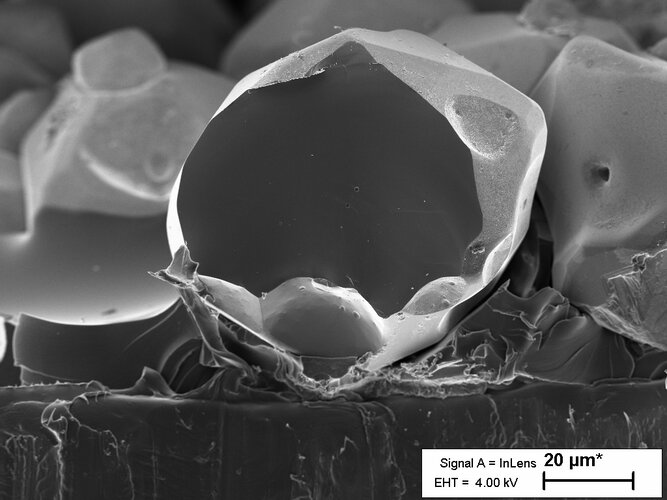This crystal of iron pyrite, just four hundredths of a millimetre in size, could function as the light absorbing layer of a tiny solar cell – potentially a promising future source of power on the Moon.
Working with Estonia’s Tallinn University of Technology (TalTech), ESA has studied the production of sandpaper-like rolls of such microcrystals as the basis of monograin-layer solar cells.
“We’re looking at these microcrystals in the context of future lunar settlement,” explains ESA advanced manufacturing engineer Advenit Makaya. “Future Moon bases will need to ‘live off the land’ in order to be sustainable, and the iron and sulphur needed to produce pyrite could be retrieved from the lunar surface.”
Dr. Taavi Raadik from TalTech explains: “Our aim is to develop technology for pyrite microcrystal growth and to use them in a monograin layer solar cell, where each tiny crystal would work as an individual solar cell. The amount of power generated by one miniscule solar cell is small but in the normal-sized module there would be billions of them – and in principle there is no limitation in terms of their size and shape. Additionally, we have the goal that all necessary source materials should be possible to harvest on the moon in-situ.”
TalTech PhD student Katriin Kristmann is having his work on this topic co-sponsored by TalTech and ESA’s Discovery & Preparation programme. He explains: “We are happy to work with that very ambitious project. Through this partnership we will have a chance to take Estonian science to the Moon.
The project will include the opportunity for Katriin to make use of laboratory facilities of ESA’s ESTEC technical centre in the Netherlands to perform detailed studies of crystal quality.
“This is only one of a range of in-situ resource utilisation methods that ESA has been researching for the Moon or further afield,” adds Advenit.
Power availability is an important factor in selecting the site of a future Moon base. The lunar south pole is favoured, for instance, because of adjacent ‘peaks of near-eternal light’ where solar power is almost continuously available. At lower lunar latitudes settlers would have to contend with two-week long nights.



 Image:
Tiny crystal of power
Image:
Tiny crystal of power